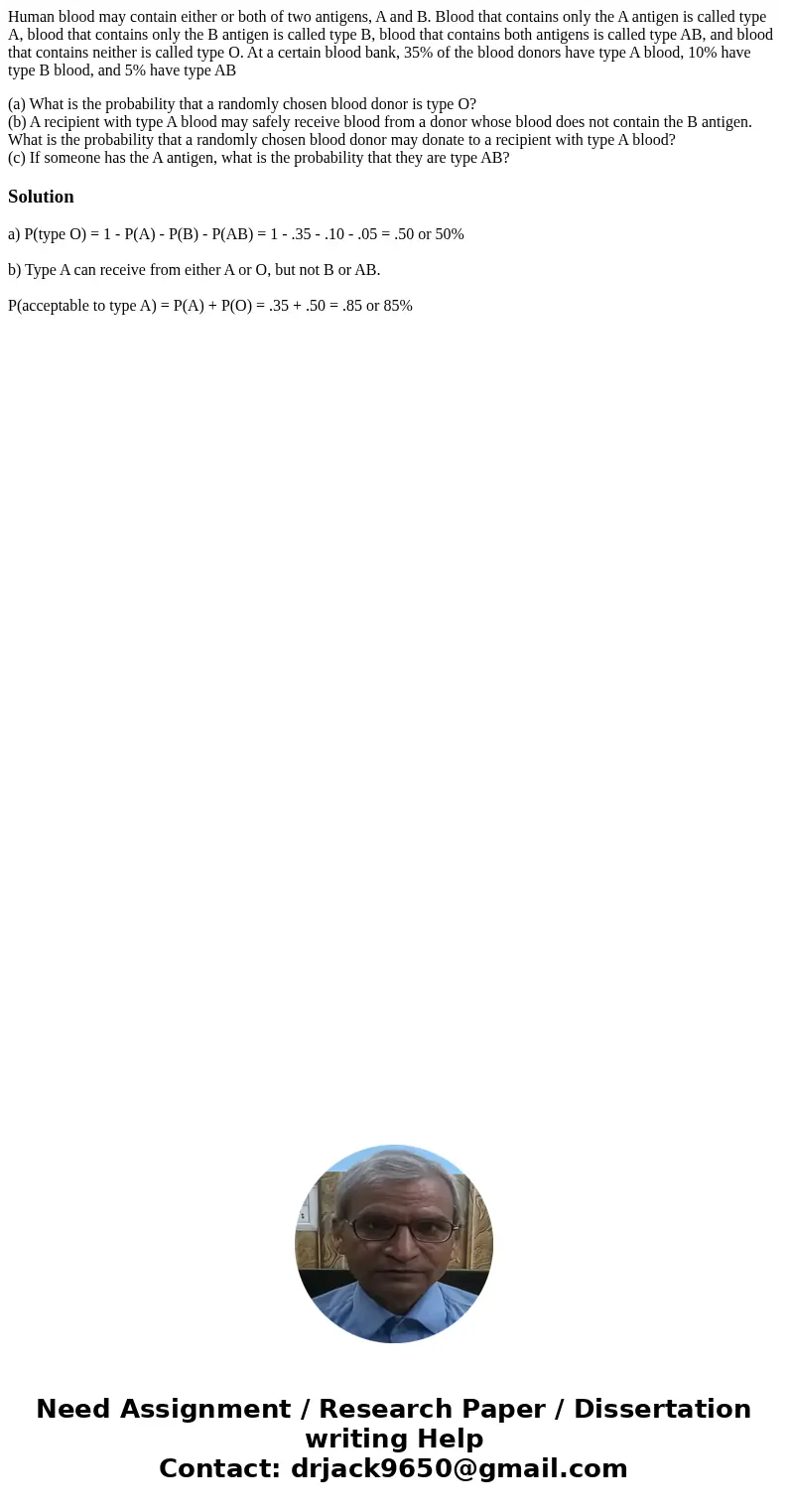Human blood may contain either or both of two antigens A and
Human blood may contain either or both of two antigens, A and B. Blood that contains only the A antigen is called type A, blood that contains only the B antigen is called type B, blood that contains both antigens is called type AB, and blood that contains neither is called type O. At a certain blood bank, 35% of the blood donors have type A blood, 10% have type B blood, and 5% have type AB
(a) What is the probability that a randomly chosen blood donor is type O?
(b) A recipient with type A blood may safely receive blood from a donor whose blood does not contain the B antigen. What is the probability that a randomly chosen blood donor may donate to a recipient with type A blood?
(c) If someone has the A antigen, what is the probability that they are type AB?
Solution
a) P(type O) = 1 - P(A) - P(B) - P(AB) = 1 - .35 - .10 - .05 = .50 or 50%
b) Type A can receive from either A or O, but not B or AB.
P(acceptable to type A) = P(A) + P(O) = .35 + .50 = .85 or 85%

 Homework Sourse
Homework Sourse